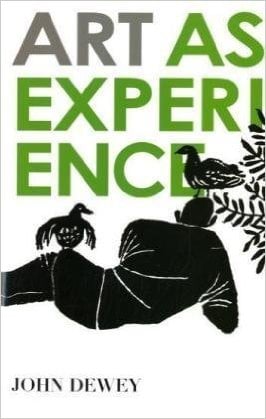
July 15, 2016
The Metropolis Summer Reading List 2016
Architects, designers, curators, and publishers tell us what they will be reading this summer.
Scrambling to find the perfect book to read this summer? We polled a handful of architects, designers, curators, and publishers—as well as our own staff members—about what they will be reading in the coming months. Here’s a list of their picks.
Hashim Sarkis
Dean
MIT School of Architecture and Planning
Art as Experience
John Dewey
1932
Dewey’s notion of consummatory experience, putting forward a pragmatist view of the artist as a strategically light-handed agent of change in society.
On the Aesthetic Education of Man
Friedrich Schiller
1795
Schiller’s gentle but powerful distinction of aesthetics from other branches of philosophy creates an instrumental space of play between art and life.
Complete Poems and Selected Letters
John Keats
Modern Library Classics, 2001
The full poems but also the letters in which Keats defines the notion of negative capability, the ability of the artist to take in the world and to express alternative worlds despite uncertainty.
The Self Awakened: Pragmatism Unbound
Roberto Mangabeira Unger
Harvard University Press, 2009
Here, as with every book he has written whether about politics, religion, psychology, or physics, Mangabeira Unger seeks to recover from pragmatism a project for the left but also a theory of action based on the infinite capacity of human imagination.
The Horizon, A History of our Infinite Longing
Didier Maleuvre
University of California Press, 2011
A historical, literary, and lyrical overview of how the horizon came into our consciousness as the limit the experienced world but also as an expression of its boundlessness.
The Invention of Nature, Alexander von Humboldt’s New World
Andrea Wulf
Knopf, 2015
A much welcomed biography of the man who bridged continents, invented geographies and created a link between the politics of humankind and the aesthetics of nature.
The Ocean, the Bird, and the Scholar: Essays on Poets and Poetry
Helen Vendler
Harvard University Press, 2015
A sublime collection of essays including some about John Keats, Wallace Stevens, and the way Stevens read Keats. The title essay provocatively and convincingly argues for placing the arts above the humanities in our education system.
Julia King
Architect and Researcher
LSE Cities
All book covers courtesy their publishers
Slow Burn City
Rowan Moore
Picador, 2016
Written by arguably one of the best architecture critics in the world. This witty, provocative and insightful book takes the reader through 300 years of London’s history, from the London Zoo, Bazalgette’s sewage intervention, through to a thorough shaming on the pitted Garden Bridge. In the words of Jonathan Meades: “[Moore] writes with a strident anger that even the most boneheaded urban regenerator will understand is directed at him. This is not a posture.”
Capital
John Lanchester
W. W. Norton & Company, 2013
Through the lens of a single street, this book brilliantly portrays what eight million people in one of the most diverse cities in the world feels like. To the backdrop of the ubiquitous London terrace (with costs that dwarf the median annual income in London—let alone the UK), Capital is a story about the bad things that happen within the particularities of everyday life. And if you can’t be bothered to read what is indeed a very long (and at times self-indulgent) book, there is a TV series by the BBC which I have been told is pretty good.
In Defense of Housing
David Madden and Peter Marcuse
Verso Books, 2016
Housing is perhaps the most important form of social exclusion and arguably the defining issue of our time. Housing is also the UK’s single biggest component of wealth, and the UK’s most valuable non-financial asset. With the poor forced to pay more for increasingly worse housing stock, and the country approaching Victorian levels of inequality, I am of course very interested to hear what David Madden and Peter Marcuse have to say about it. David Madden is a Professor in Sociology and teaches in the Cities Programme at LSE (where I will be teaching next year). Peter Marcuse needs no introduction.
Rule By Aesthetics, World-Class City Making in Delhi
Asher Ghertner
Oxford University Press, 2015
I have partially read this book (but feel compelled to read it in one sitting), which presents a persuasive theory about the role of aesthetics and visual appearance as a kind of defacto legality that, in the case of Delhi, has more sway than planning, legislation, and the environment. Ghertner’s work is hugely important and forms part of a growing concern with ‘world class city narratives’ and the ‘worlding’ of cities—a phrase coined by Aihwa Ong and Ananya Roy, who was Ghertner’s PhD supervisor at Berkeley. A must read for all urbanists interested in Asia, governance, and displacement.
Lars Müller
Publisher and Designer
Lars Müller Publishers
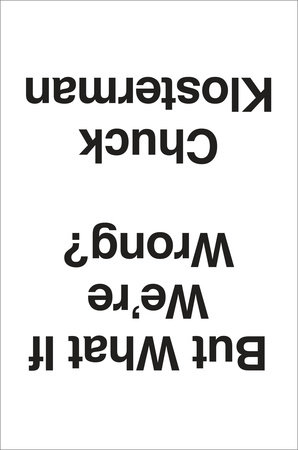
But What if We’re wrong?: Thinking about the Present as if it Were the Past
Chuck Klosterman
Blue Rider Press, 2016
It made me think. Klosterman points to a question I have had in mind for a while: what if we are misled and arrogant in our contemporary assumptions, as were our ancestors over the past centuries, whose errors we have by now cleared up – only to replace them by other errors?
Spheres III: Foams
Peter Sloterdijk
Semiotext(e), 2016
With Foams, Sloterdijk’s completes his Spheres trilogy and his attempt to retell the history of humanity. With only little philosophical knowledge, I am inspired to think and speculate.
Cities in Transition: Power, Environment, Society
Saskia Sassen
NAi010 Publishers, 2016
Twenty years from now, 60% of the world’s population will live in cities. Cities promise better conditions for life, work and education, but carry also the risk of poverty and ruin. Sassen assembles essays by 30 experts that throw light on current developments and our global urban future.
Reset Modernity
Bruno Latour, ed.
MIT Press, 2016
The idea that modernity might need a sort of reset attracts my interest because of the struggles I have faced adapting my beliefs (as a modernist) to current realities, reorienting myself, and preparing for new encounters.
The Craftsman
Richard Sennet
Yale University Press, 2009
Prepared for re-reading, when time allows.
James Graham
Director of Publications
Columbia University GSAPP
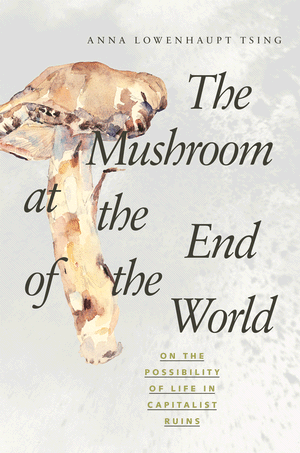
The Mushroom at the End of the World: On the Possibility of Life in Capitalist Ruins
Anna Lowenhaupt Tsing
Princeton University Press, 2015
The anthropologist Anna Tsing joins a range of scholars exploring the ongoing devastation of our environment and undoing the old binary of “nature” and “society”—in this case, taking the charismatic Matsutake mushroom as her protagonist, tracing its existence within ecosystems, markets, and cultures across the globe. I’m interested in this rather remarkable book, both in its empathetic meditations on “companion species” and in its experimental mode of history writing.
Outlaw Territories: Environments of Insecurity / Architectures of Counterinsurgency
Felicity D. Scott
Zone Books, 2016
Felicity Scott has been a major influence on my own path through the world of architectural history, and I have tremendous respect for her archival rigor and keen eye for overlooked but seminal projects that help us draw connections between architecture, politics, environment, and neoliberalism. Her new book on architecture and the exercise of biopolitical power in the era of decolonization is excellent, extensive, and indeed urgent—given the vast human unsettlement of our own moment, coming to terms with its longer history is essential for thinking about how architecture might respond to social questions on a territorial scale.
My Brilliant Friend
Elena Ferrante
Europa Editions, 2012
This probably isn’t a novel that needs more plugging, given that I’m a bit late to the game on the Neapolitan Novels, but it’s actually my beach reading this year—so it goes on the list. I love sprawling social panoramas and generously drawn characters, so I suspect I’ll find Ferrante’s work as absorbing as others do.
“Trump Syllabus 2.0”
N.D.B. Connolly and Keisha N. Blain
Public Books, 2016
Over the past few years, reading lists themselves have become an increasingly vital mode of discourse, particularly when they respond to political, social, or cultural events (the #FergusonSyllabus hashtag being an excellent example). Syllabi are meant to be avenues for further reading, obviously, but at their best, they also warrant reading in their own right—even in citation form, they help us grasp the breadth and contours of complex contemporary questions. So my reading list includes a reading list, N.D.B. Connolly and Keisha N. Blain’s brilliant “Trump Syllabus 2.0,” which interrogates the phenomenon of Donald Trump through a selection of texts on themes like immigration politics, media and misogyny, racism and mass incarceration, and so on.
Albert Ferré
Associate Director, Publications
Canadian Centre for Architecture
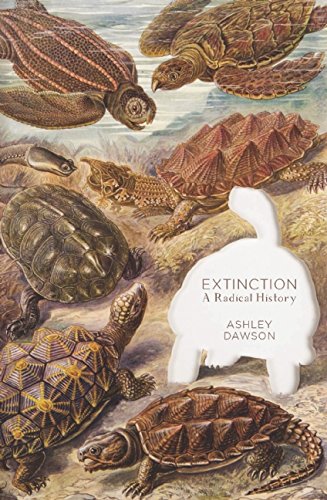
Extinction, A Radical History
Ashley Dawson
OR Books, 2016
This is a short summer read with big political weight. It’s a story about the massive extinction of Earth’s species resulting from our contribution to climate change and from the economic model that shapes all spheres of our lives. (And by the way, OR is an interesting publishing project.)
Climates: Architecture and the Planetary Imaginary
James Graham, Caitlin Blanchfield, Alissa Anderson, Jordan Carver, Jacob Moore, eds.
Columbia Books on Architecture and the City and Lars Müller Publishers, 2016
The Avery Review team expands architecture’s dominant discourses on sustainability by reflecting on our relationship to climate. So if climate changes, as it does, what does architecture have to do with it?
Memo for Nemo
William Firebrace
AA Publications, 2016
These are fantastic tales on undersea exploration. “The history of descending into the depths of the ocean is filled with dubious facts,” stated Firebrace at the beginning of an article published in Cabinet. The sentence serves as a disclaimer of the work he is now publishing in book form.
Anomalies of the 21st Century / Some Case Studies
Sven Johne & Sebastian Orlac
Spector Books, 2016
Another mix of fiction and facts, this collection of stories by an artist and a filmmaker combines criticism of capitalism and desire for exploration in multiple accounts of social exclusion. The deviations end up being very normal and familiar.
Christopher Turner
Director
London Design Biennale

Artificial Darkness: An Obscure History of Modern Art and Media
Noam M Elcott
Chicago, 2016
A study of the black screen and other theatrical devices and their role in magical illusion, from Etienne-Jules Marey to Oskar Schlemmer. An eccentric adventure into the shadow play of early modernism.
The Suit: Form, Function and Style
Christopher Breward
Reaktion, 2016
A scholarly history of sartorial style, a dialectic between peacock fashions and their renunciation. “Woe to the painter expressing his individuality with a satin frock,” wrote Adolph Loos, “for the artist in him has resigned in despair.”
Christoph a. Kumpusch
Architect
Professor, Columbia University GSAPP
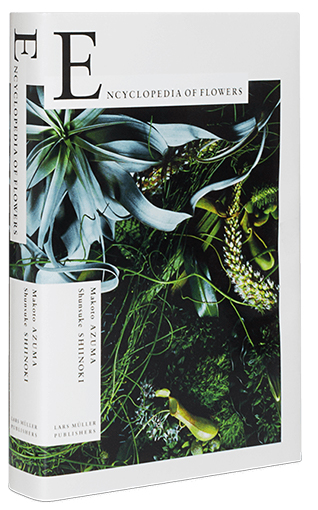
Encyclopedia of Flowers: Flower Works by Makoto Azuma photographed by Shunsuke Shiinoki
Kyoto Wada
Lars Müller Publishers, 2012
Okay. This book replaced our only plant in the office. It will live forever. Highly inspirational work by Makoto and Shunsuke. I love their process.
The Future of the Mind: The Scientific Quest to Understand, Enhance, and Empower the Mind
Michio Kaku
Anchor Books, 2015
I came to The Future of the Mind after reading Kaku’s Visions: How Science Will Revolutionize the 21st Century, which was published in 1998, and Hyperspace, which in essence speaks about time warps and the 10th dimension. Fascinating—when reading it I couldn’t wrap my brain around anything going beyond the 4th dimension. The Future of the Mind is an exciting look inside of what’s happening in some of the most interesting research labs in the world. It describes experiments and looks deeply at things like telepathy, telekinesis, avatars and dream and memory recordings. Brain-nets, cognitions, and things like smart-pills are discussed.
The Arab City: Architecture and Representation
Amale Andraos and Nora Akawi
Columbia University Press, 2016
I just started reading The Arab City: Architecture and Representation about two weeks ago and it is hard to stop. The point of departure isn’t a single one – and certainly not one that focuses or relies on questions of identity or authenticity as a common nominator. It looks also at the question of Representation through multiple lenses, where the local and global blur. My partner in the Institute of Mutating Cities, Youmna Chlala and I have a trip planned to Beirut at the beginning of August and The Arab City will very much be our guide.
The Havana Project: Architecture Again (Architecture & Design)
Peter Noever
Prestel Publishing, 1996
I always found this book inspirational for its applied urban research. This book was part of a series that included The End of Architecture. I am way more optimistic (no end in sight in architecture), but it’s a great book.
Poemotion 1
Takahiro Kurashima
Lars Müller Publishers, 2012
Visual Poetry. Drawing with words. Very calming. Makes you love the other side of construction documents.
Susan S. Szenasy
Editor in Chief, Metropolis
Where We Want to Live
Ryan Gravel
St. Martin’s Press, 2016
This book takes on a city known for its sprawl and charts its 21st-century course. Based on the author’s brilliant masters thesis on Atlanta’s Beltline, the text argues for reimagining the old rail beds and the communities that grew up around them as a walkable, bikeable, transit-served, healthy city.
The Glass Room
Simon Mawer
Other Press, 2009
This novel traces the lives of a young, wealthy couple caught up in the first Euphoria of heroic modernism between the two world wars. Their big adventure: building their family house, based on the new, forward-thinking ethos of their brilliant architect (think Mies’s Villa Tugendhat), only to be shattered by another, poisonous interpretation of modernity: Fascism.
Mikki Brammer
Editor at Large, Metropolis

Hold Still: A Memoir with Photographs
Sally Mann
Back Bay Books, 2016
Photographer Sally Mann’s offbeat memoir, told through a breathtaking combination of words and photography.
Just Mercy
Bryan Stevenson
Spiegel & Grau, 2015
An exploration of the activist lawyer Bryan Stevenson’s work as cofounder of the Equal Justice Initiative.
Eve of A Hundred Midnights
Bill Lascher
William Morrow, 2016
A compelling true story, pieced together from interviews and archival documents, of two war correspondents—Melville Jacoby and Annalee Whitmore—and their love affair.
The Hour of Land
Terry Tempest Williams
Sarah Crichton Books, 2016
This wanderlust-inducing literary tribute – or “personal topography” – to the USA’s national parks coincides with this year’s centennial of the National Parks Service.
A Curious Mind
Brian Grazer
Simon and Schuster, 2015
Prolific movie producer Brian Grazer details how having a curious mind led to his success.
Travis Ward
Art Director, Metropolis
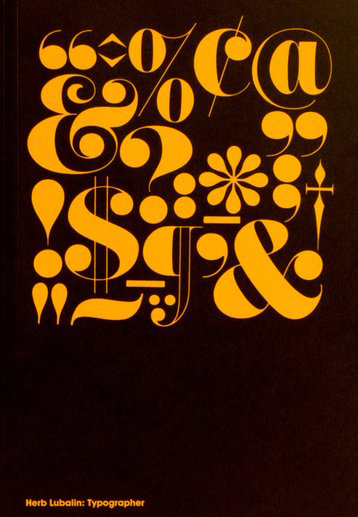
Herb Lubalin: Typographer
Adrian Shaughnessy
Unit Editions, 2016
Many books have been written about Lubalin as a graphic designer, but this one focuses solely on his work as typographer and features lots of previously unpublished works.
Imperfection Booklets: Risograph
O.OO
Self published, 2016
Two volumes celebrating the notoriously finicky printing process and all the glorious imperfections that come along with it. Printed with 12 colors and limited to 1,000 copies.
Type Hybrid: Typography in Multilingual Design
Victionary, ed.
Victionary, 2016
Shows you how to step up your international design skills using multiple languages and type systems together.
Min: The New Simplicity in Graphic Design
Stuart Tolley
Thames & Hudson, 2016
Organized into three different sections—”Reduction,” “Geometry,” and “Production”—Min shows recent minimalist work in a range of formats and mediums.
Seeing New Music – Contemporary Classical Music Through the Eyes of a Graphic Designer
Denise Burt
Decapo Classical, 2015
An excellent collection of album cover work by Danish graphic designer Densie Burt. She explains how to create meaningful designs from often abstract or obtuse music.
Avinash Rajagopal
Senior Editor, Metropolis

Empire of Things
Frant Trentmann
Harper Collins, 2016
This weighty volume is more a summer project than leisure reading, but it’s worth the effort. This 600-year history of consumerism reveals the surprising sources of our current economic system.
Warm Modernity: Indian Architecture Building Democracy
Maddalena D’Alfonso
SilvanaEditoriale, 2016
Independent India is an ideal case study for the relationship between postcolonial democracy and modernist architecture, and D’Alfonso offers three carefully-researched examples from the country that help draw out some lessons for participatory architecture.
Stuffocation: Living More with Less
James Wallman
Revised edition by Penguin Books, 2015
Wallman offers a jaunty self-help guide to how we can shed some of the excesses of consumerism from our lives—and maybe save humanity and the planet in the process.
Arrival City
Doug Saunders
Vintage, 2012
As the recent Brexit vote makes clear, how our cities handle immigration is a test of their resilience and success. This book has plenty of stories from cities that have perfected the art of taking in immigrants and giving them safety and prosperity.
Top This and Other Parables of Design: Selected Writings by Phil Patton
Phil Patton
Cooper Hewitt, 2016
Patton, who passed away in September 2015, was an incredibly close observer of design, writing for I.D., Metropolis, and the New York Times, among other publications. The essay on the typologies of coffee cup lids, in particular, is a master class in design writing.
Helene Silverman
Art Director, Metropolis
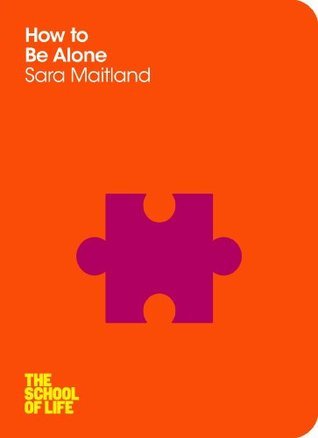
How to Be Alone
Sara Maitland
Picador, 2014
Part of the Alain de Botton ‘School of Life’ series, this book upends the self-help genre with historical, witty and profound personal reflections on the so-called rules of society.
Hotels of North America
Rick Moody
Little, Brown and Company, 2015
At first a seriously laugh-out-loud dry comedy, it slyly reveals itself as a bittersweet telling of the peripatetic life of an online hotel reviewer.
Fortune Smiles
Adam Johnson
Random House, 2015
These Intense, George Saunders-like short stories could be too much for some beach readers, but fans of his Pulitzer-winning novel The Orphan Master’s Son should not miss this.
The First Bad Man
Miranda July
Scribner, 2015
The pinnacle of what I want from July. A hysterically funny, emotion-soaked gender exploration like no other. Not for everybody.
Station Eleven
Emily St. John Mandel
Vintage, 2014
Near-future catastrophe fiction that gives the oft-maligned genre a good name.
Did You Ever Have a Family
Bill Clegg
Gallery/Scout Press, 2015
Slowly unwinding drama/mystery of family tragedy.
M Train
Patti Smith
Knopf, 2015
Musings on coffee and travel, with an elegiac quality.
Vanessa Quirk
Web Editor, Metropolis
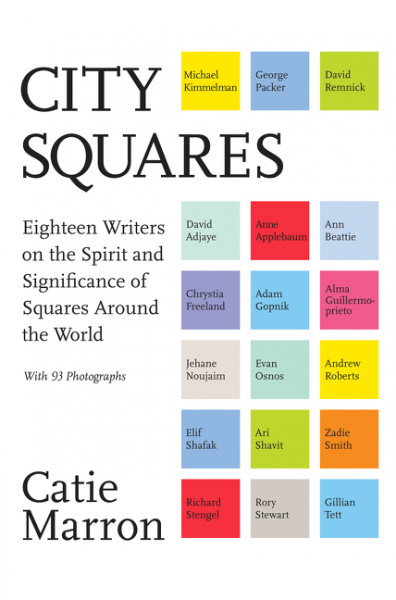
City Squares
Catie Marron, ed.
Harper Collins Publishers, 2016
A fantastic concept: this book asks eighteen writers—including Michael Kimmelman, David Remnick, David Adjaye, and Zadie Smith—to reflect on the significance of a particular city square around the world.
The Battle for Home: The Memoir of a Syrian Architect
Marwa Al-Sabouni
Thames & Hudson, 2016
In this well-written memoir, Marwa Al-Sabouni chronicles the challenges that face a young, idealist architect in Syria as well as the ways the destruction of the country’s built environment (particularly its public spaces) reflects a greater societal dissolution.
The Death and Life of Great American Cities
Jane Jacobs
With Jacobs’ 100th birthday being celebrated this year, now is a good time to revisit this classic.
There Goes the Neighborhood
The Nation and WNYC Studios
While I will certainly strive to crack open all the previously mentioned books, the far more likely scenario is that I will be listening to podcasts while lounging at the beach this summer. Top of my list is There Goes the Neighborhood: a fantastically well-reported, human-centered dive into gentrification as it really plays out in neighborhoods across Brooklyn.
Recent Viewpoints
Viewpoints
Google’s Ivy Ross Makes Sense of Color








